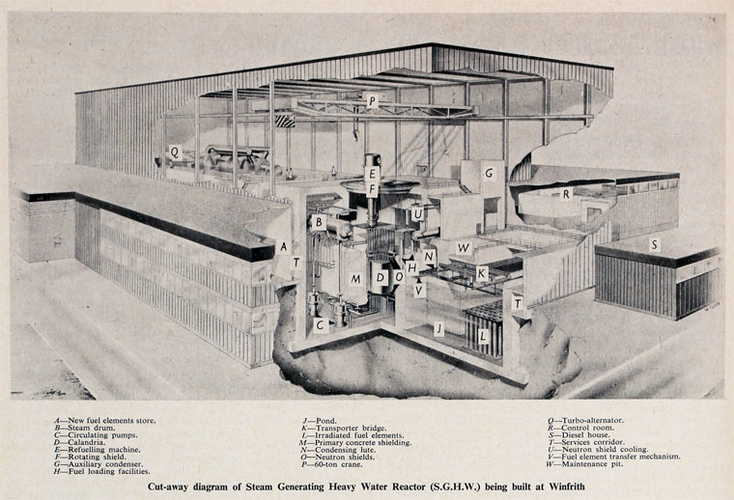Rule of cool
ACCESS: Top Secret
- Joined
- 16 January 2024
- Messages
- 1,095
- Reaction score
- 1,362
I keep bumping into this from different angles, its technically very interesting to me so I'll ask the question here and see what happens.
In the late 50s Britain was looking for a more commercially oriented nuclear power reactor type to follow on from it's operationally successful but not very commercially successful 'Magnox' series reactors, the first of which had been the worlds first nuclear power station. To this end they built 4 prototype nuclear reactors, 3 of which were connected to the grid.
In 1965, using reasoning that if 'refueled online', so called 'British conditions' it would be cheaper to generate electricity than coal, the Central Electricity Generation Board selected the (Magnox derived) Advanced Gas-cooled Reactor design for full scale roll-out. In the event this was badly botched and the AGR proved complex, difficult and expensive to build, not competitive with US PWRs and BWRs on the export market nor meet its commercial promises.
In contrast the South of Scotland Electricity board (as opposed to North of Scotland Hydro-electric Board) preferred the Steam Generating Heavy Water Reactor type, which incidentally was the only nuclear reactor in the period built on time and on budget. In 1970 Australia selected the SGHWR for its Jervis Bay reactor project, only to cancel it a year later. In 1974, looking to build another batch of power stations and the AGR programme mired in problems the SGHWR reactor was selected for future builds, but this decision was reversed in 1976 and the AGR was persevered with for the next nuclear power station.
Given Australia and the SSEB preferred the SGHWR and the AGR was chosen under dodgy pretenses would Britain have been better off to bite the bullet with the SGHWR back in the 60s?
In the late 50s Britain was looking for a more commercially oriented nuclear power reactor type to follow on from it's operationally successful but not very commercially successful 'Magnox' series reactors, the first of which had been the worlds first nuclear power station. To this end they built 4 prototype nuclear reactors, 3 of which were connected to the grid.
| Name | Location | Coolant | Neutron Moderator | Energy-thermal/electric | start operations | cease operations |
| Prototype Fast Reactor (PFR) loop-type Fast Breeder | Dounreay | Sodium–potassium alloy | no moderator | 60 MWt and 14 MWe | 14-Nov-59 | Mar-77 |
| Windscale Advanced Gas-cooled Reactor (WAGR) | Sellafield/Windscale | Carbon dioxide cooled | graphite moderator | 100 MWt and 30 MWe | 9/08/1962 | 1982 |
| Dragon high-temperature gas-cooled reactor (HTGR) | AEE Winfrith | Helium Cooled | graphite moderator | 20 MWt | 1/01/1964 | 1976 |
| Steam Generating Heavy Water Reactor (SGHWR) | AEE Winfrith | light water cooled | heavy water moderator | 100 MWe | 1967 | Oct-90 |
In 1965, using reasoning that if 'refueled online', so called 'British conditions' it would be cheaper to generate electricity than coal, the Central Electricity Generation Board selected the (Magnox derived) Advanced Gas-cooled Reactor design for full scale roll-out. In the event this was badly botched and the AGR proved complex, difficult and expensive to build, not competitive with US PWRs and BWRs on the export market nor meet its commercial promises.
In contrast the South of Scotland Electricity board (as opposed to North of Scotland Hydro-electric Board) preferred the Steam Generating Heavy Water Reactor type, which incidentally was the only nuclear reactor in the period built on time and on budget. In 1970 Australia selected the SGHWR for its Jervis Bay reactor project, only to cancel it a year later. In 1974, looking to build another batch of power stations and the AGR programme mired in problems the SGHWR reactor was selected for future builds, but this decision was reversed in 1976 and the AGR was persevered with for the next nuclear power station.
Given Australia and the SSEB preferred the SGHWR and the AGR was chosen under dodgy pretenses would Britain have been better off to bite the bullet with the SGHWR back in the 60s?
Last edited:


